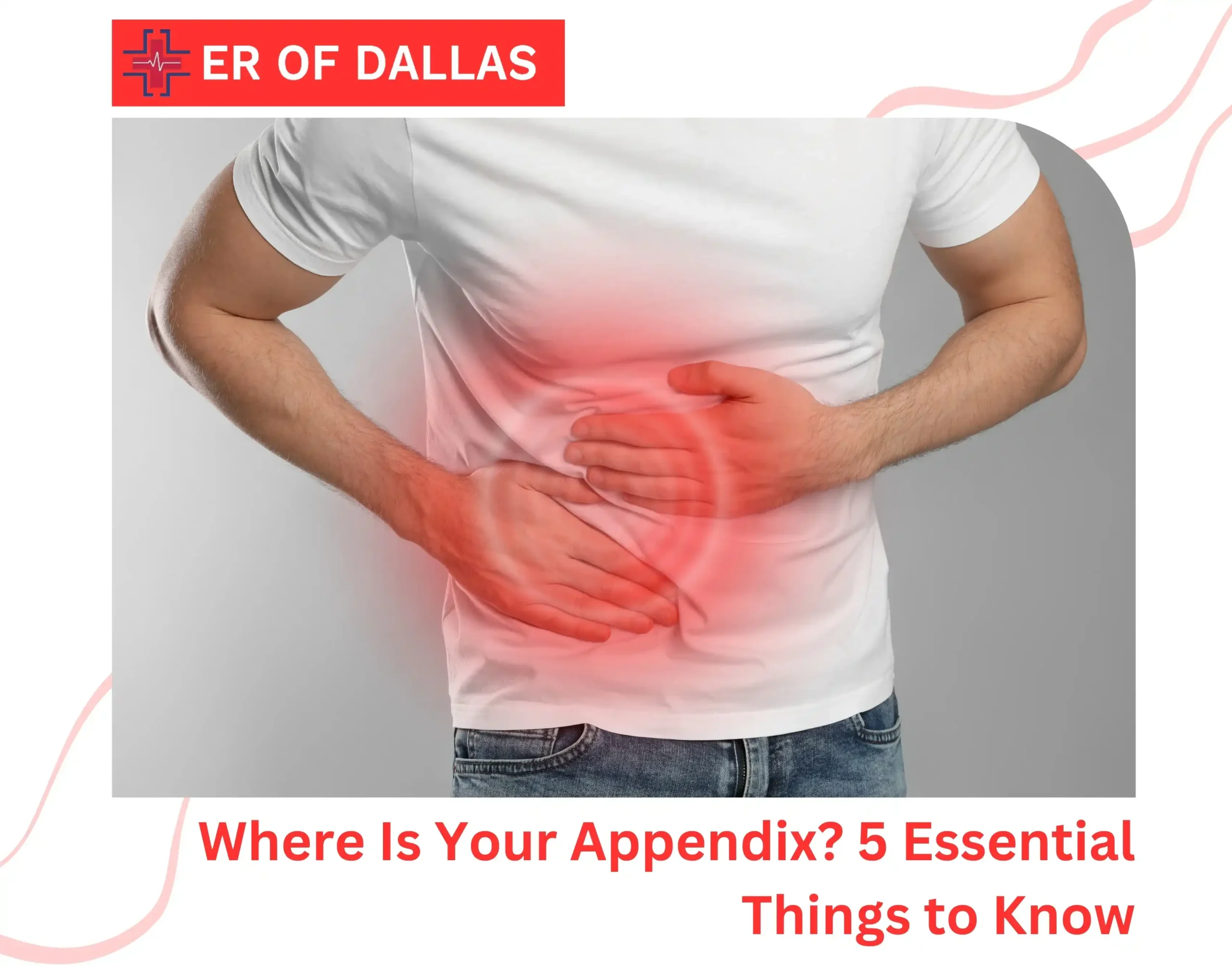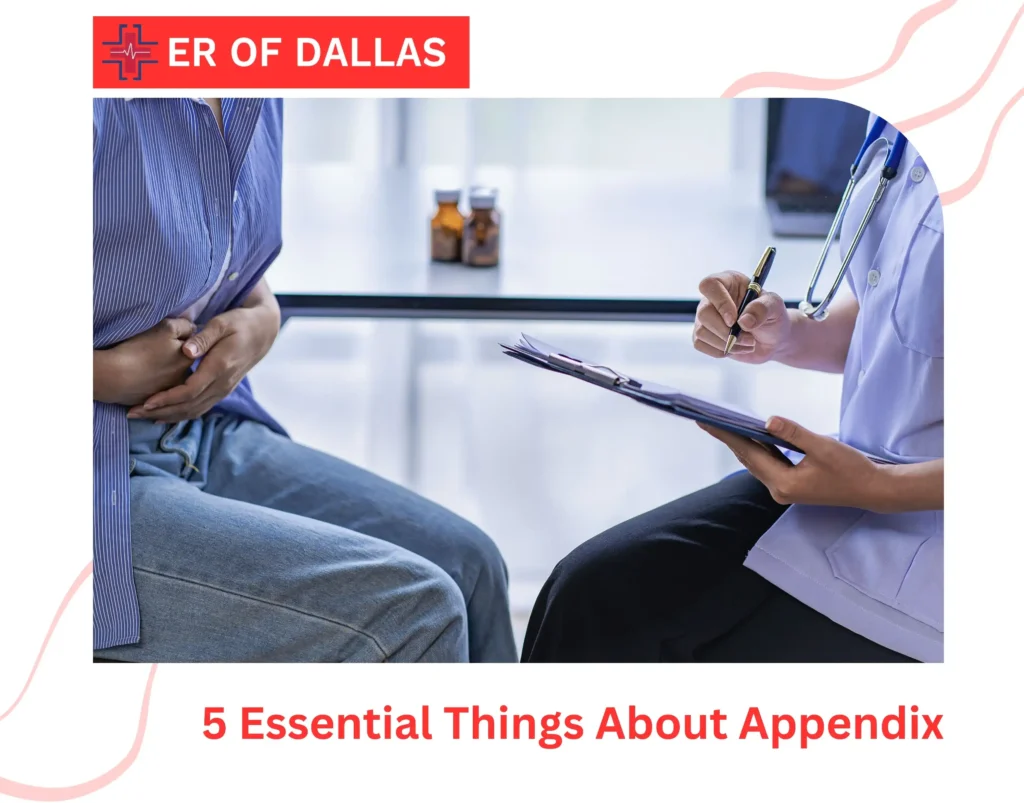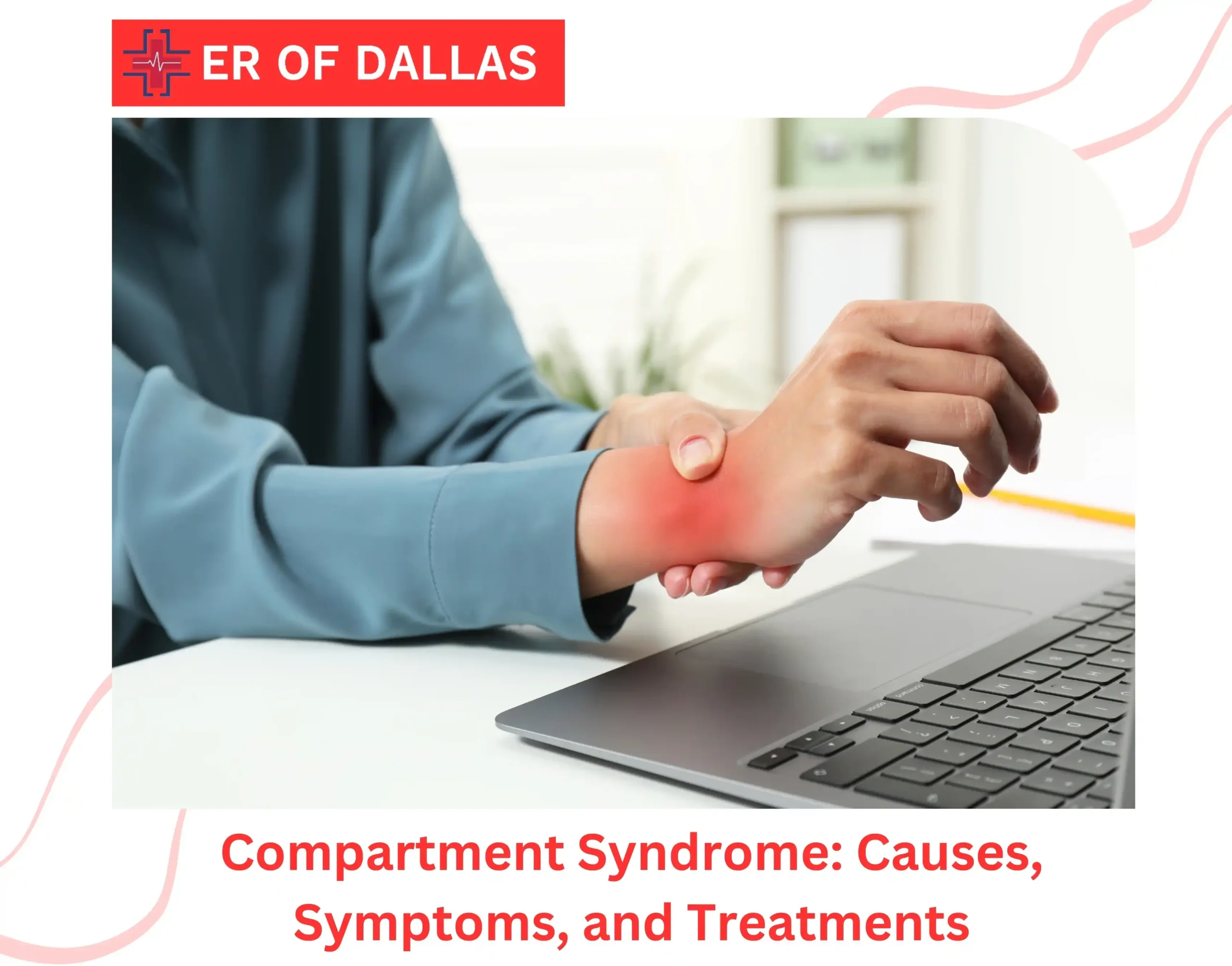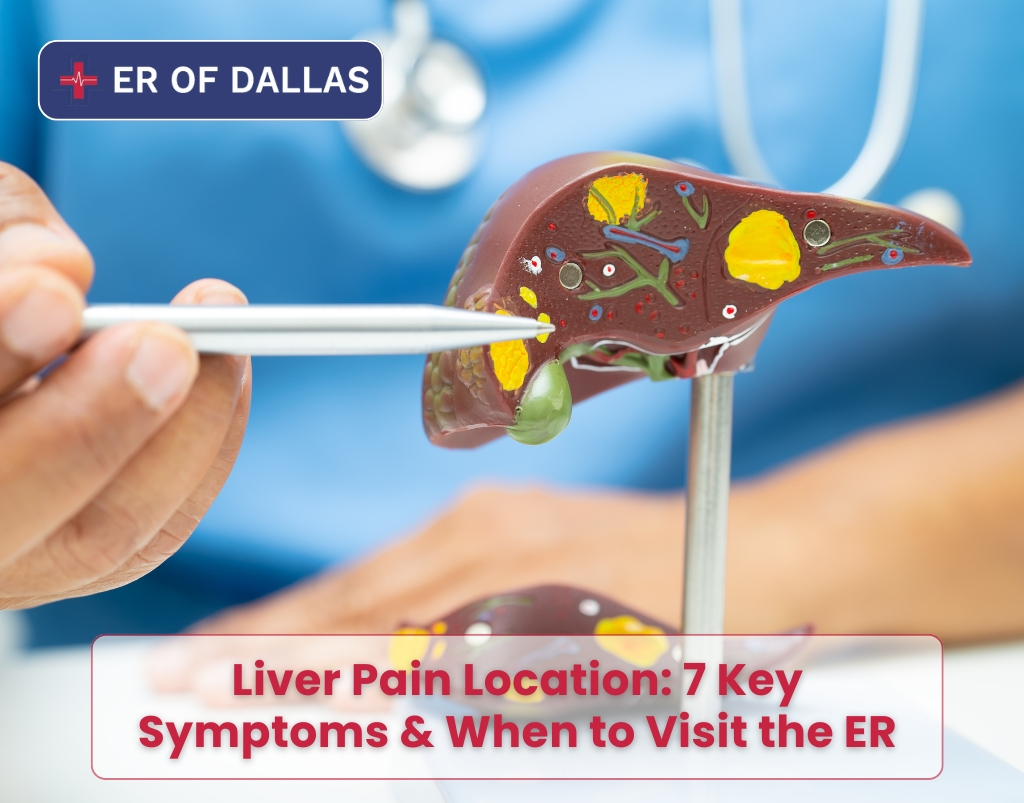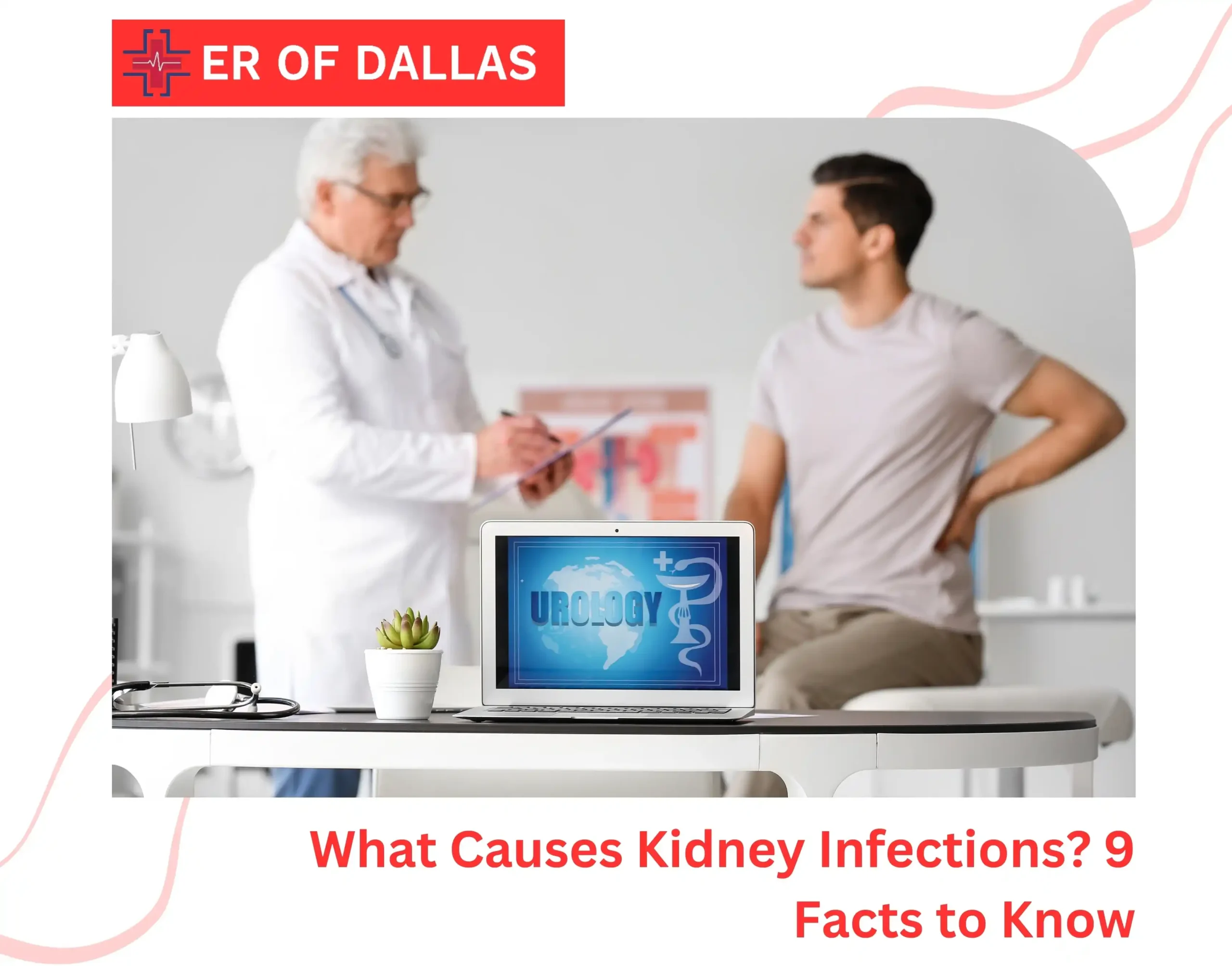Do you know that if your appendix bursts, you’ve 24 to 72 hours before dangerous bacteria spread through your abdominal cavity? But where is your appendix—and how would you know if it has burst or is about to?
The good part is, our appendix gives out warning signs before it gets to that point. The bad part is, many people brush off those signs as gas, indigestion, or cramps.
If you catch those early signals, you have a solid chance of getting treated before things get serious. Let’s walk through five essential things about your appendix, so you can stay ahead of the game and avoid a rupture altogether.
5 Essential Things About Appendix
Your appendix may be small, but ignoring it can lead to big problems. Here’s what you need to know to stay safe.
1. The Location of Appendix
Where is your appendix? The appendix is a 3 to 4-inch tube-shaped pouch, located in the lower right side of your abdomen. To be more specific, it’s attached to the beginning of your large intestine, in a spot called the cecum. If you place your hand slightly to the right side below your belly button, you’re pretty close to where your appendix sits.
2. The Function of the Appendix
For years, doctors thought the appendix was a body part we used to need but don’t anymore. Some newer studies suggest it helps store healthy gut bacteria and help the body recover after a stomach illness or infection. Like a little “safe house” for healthy bacteria.
Still, you can live perfectly fine without your appendix. Doctors usually remove the appendix If it becomes inflamed or infected. And most people recover with no long-term problems.
3. The Infected Appendix (Appendicitis)
Though the appendix doesn’t have a significant role in the body, when it gets blocked (by mucus, feces, or infection), bacteria build up inside. That causes swelling and pain, and the condition is called appendicitis. If not treated on time, an infected appendix can burst.
A burst appendix can spread infection throughout your belly and cause life-threatening conditions. So, a surgical removal is crucial before it bursts. These signs will help you spot an infected appendix and reach the emergency room before things worsen.
4. Early Signs of Appendicitis (Before It Bursts):
Here’s how the appendix typically signals trouble before it bursts:
- Pain near the belly button: This is often the first sign. It may feel dull or crampy at first.
- Pain moves to the lower right side: Within a few hours, the pain usually shifts down to the right side of the abdomen. That location change is a big red flag for appendicitis.
- Pain gets sharper with movement: Coughing, sneezing, and walking, worsens the pain.
- No appetite: When there’s an infection, your immune system releases chemicals that suppress appetite. That’s why you suddenly don’t want to eat.
- Nausea and vomiting: You feel sick to the stomach because the body is reacting to the inflammation.
- Low-grade fever: You may have a slight fever as the body starts fighting off infection.
- Bloating: Some patients feel bloated or gassy, thinking it’s just digestion. But gas pain can be felt anywhere in your abdomen, while appendicitis causes localized pain on the lower right side of the abdomen.
The appendicitis may not follow the exact script every time. If you notice even one of these symptoms, get checked out.
5. What Happens If You Don’t Know It’s Burst?
If you ignore it, the appendix can burst a day or two after symptoms onset. Strangely, the pain feels better once it has ruptured. But that’s a false signal; never ignore intense abdominal pain that suddenly goes away. The bacteria spills into your abdominal cavity, and the infection starts spreading. Here’s what can go wrong if you don’t get timely treatment:
- Peritonitis: The bacteria inflame the lining of your abdomen (peritoneum) in a condition called peritonitis.
- Abscess formation: The body sometimes tries to wall off the infection, forming pus pockets. These abscesses may need to be drained surgically or with a tube.
- Sepsis: If the infection spreads into the bloodstream, it can cause sepsis. It’s a medical emergency that can lead to organ failure or death.
- Scarring or bowel issues: Complications like adhesions (scar tissue) may form, which can lead to future digestive issues or bowel obstructions.
- Longer recovery: A simple appendectomy (removing an inflamed appendix) usually has a quick recovery. But if it’s ruptured, you may have to face weeks of hospital care, months of medicine courses, and a higher risk of complications.
Final Thoughts: Don’t Ignore Belly Pain
If you reach your nearest emergency room in Dallas the moment you first feel abdominal pain, you will save yourself a big surgery and additional cost. When you come to ER Dallas soon after the pain starts, we’ll run the necessary tests and begin treatment without delay.
If you were lucky to make it on time, you can go home the same day or the next. Visit ER Dallas anytime and get it checked out.
FAQs
1. Can you live without your appendix?
Yes, you can live just fine without your appendix. It doesn’t have a significant role in the body, so when it’s gone, the body keeps working like normal.
2. Can appendicitis go away on its own?
Not usually. Appendicitis usually gets worse over time. If it’s not treated, the appendix can burst, which is dangerous.
3. How long does it take to recover after appendix surgery?
If the appendix is removed before it ruptures, most people feel better within a week or two. If it’s already torn, recovery takes a bit longer. With rest and antibiotics, people bounce back well.
4. Can You Prevent Appendicitis?
Unfortunately, there’s no guaranteed way to prevent appendicitis. It often comes on suddenly, and the exact cause is often unclear. Sometimes, it’s a blockage in the appendix from stool, a stomach infection, or swollen lymph tissue.
Keep your digestive health good to reduce the risk. Drink plenty of water, and eat a high-fiber diet with fruits, vegetables, and whole grains. Never ignore abdominal pain and seek timely care.

